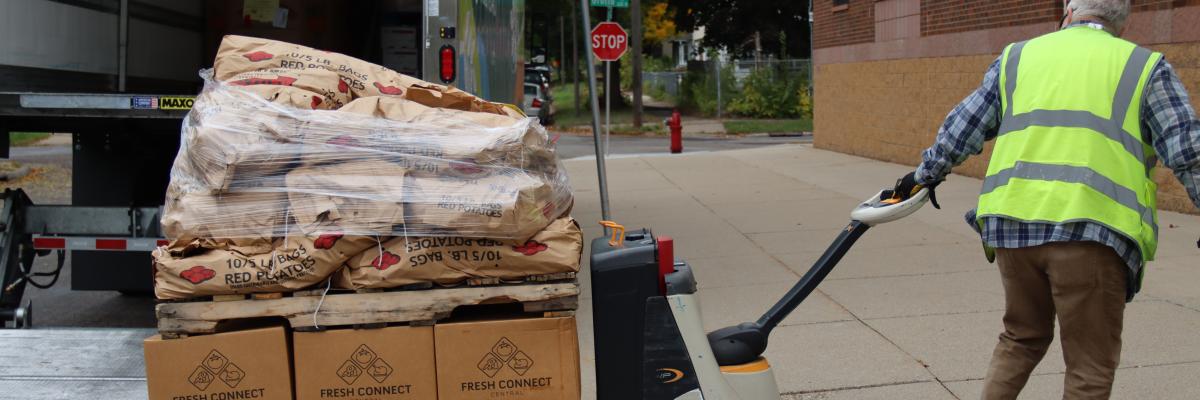
Update
Make Hunger History
We’re making progress on a bold goal: cutting hunger in half for all Minnesotans by 2030
Minnesotans visited food shelves a record 7.5 million times in 2023. In fact, each of the last three years Minnesota has had record numbers of food shelf visits. To combat this surge in hunger, we need bold new solutions, stronger connections, and a way to measure progress so we can understand what’s working.
That’s why Second Harvest Heartland, alongside business leaders, policymakers, food shelves and hunger relief partners, came together in January to announce Make Hunger History. This new initiative unites these communities in an ambitious goal to cut hunger in half for all Minnesotans by 2030.
We hit the ground running this spring on our first pillar of Make Hunger History—getting more of the right food, right where it’s needed. We’re improving our food sourcing and operations in various ways to make that happen.
“There's a lot of different partnerships and a lot of different ways that food makes its way here,” explains Director of Sourcing and Demand Planning Lindsey Ochmanek. “We need to be really thoughtful about making sure that we are meeting the needs of our neighbors.”
Through a new partnership with Fresh Connect Central in Indiana, Second Harvest Heartland has begun sourcing meat at a lower price. Since our fiscal year started in October, we’ve sourced over 1M pounds of protein and distributed almost 20% more protein to date than last year. We are also sourcing eggs from HATCH, a nonprofit that connects farmers to hunger relief partners, so we can distribute large quantities of this highly-sought-after healthy food.
Along with these new partnerships, corporate partners are stepping up as well. Second Harvest Heartland recently received some large donations of hard-to-source protein, including 2 full truckloads of turkeys from Cub and a load of donated protein from Jennie O.
“We're out there all the time looking for different opportunities and partnerships to increase protein,” Lindsey continues. “It's one of the most expensive items that our neighbors have to put on their plates and knowing therefore that it's one of the most in demand [items] at our partners."
Second Harvest Heartland is also considering ways we can change our processes to get food out into the community as quickly and safely as possible.
“As we work to Make Hunger History, a big piece of my role is to transform our supply chain to ensure that we can continue to deliver against the growing need in Minnesota,” says Senior Director of Supply Chain Toni Scott.

Increasing route efficiency has been a priority as Second Harvest Heartland aims to make hunger history.
By using process mapping and optimizing our food storage strategies, Second Harvest Heartland's warehouse teams are assembling food shelf partner's orders faster and getting 20% more pounds of food out the door each day. We have also cross trained our warehouse staff to increase flexibility and maximize the power of the team to keep up with record demand.
On the transportation side, we are leveraging data to optimize capacity, delivering food directly from farms to food shelf partners, and increasing route efficiency to deliver more food for our neighbors. With these changes in place, we are getting more food into the hands of neighbors who need it most.
“Since 2018, we have doubled the number of pounds [of food] through our warehouse, and in the past couple of years, we are seeing a 15 percent increase each year,” said Toni. “It takes more people, more equipment, more of everything to make sure that we're delivering against that demand.”
Significant adjustments to Second Harvest Heartland’s operations and sourcing methods have already impacted the effort to cut Minnesota’s hunger in half by 2030, but there are many more pieces to the puzzle. Stay tuned for future progress updates on the Make Hunger History initiative and consider ways to get involved because one thing is certain: if we’re going to achieve this goal – it's going to take all of us!
